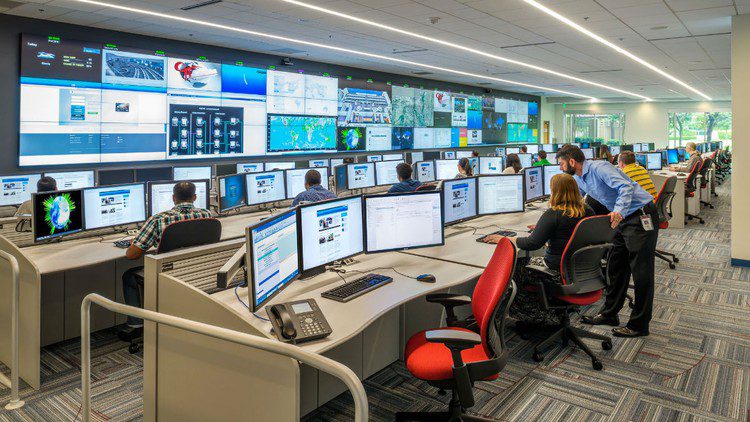Unveiling the Sentinel: Understanding the Core of SOC (Security Operations Centre)

As the cyber threats have evolved and are becoming sophisticated day by day and are targeting the organizations, to tamper with their security system. It has become important to have a dedicated facility that can monitor, detect, analyse and respond to the security events 24/7 and are available 365 days. This is where Security Operations Centre comes into the play. This security operation centre serves this critical function of protecting organizations network. Let’s understand what is a SOC and why is it important that organization should have one.
A Security Operations Centre also known as SOC stands is a centralized unit that leverages the collaborative blend of people, process and technology to systematically create the vigilant monitoring and protect the organizations networks, data, system as well as application from the cyber threats. The main objective of an SOC is to include robust detection, in-depth analysis, well-organized response plan in case of any cyber-attack. Another key aim is the continuous improvement of security measures, or you can say providing an extra layer of security for preventing any future attacks.
Now that you have an overview of what is SOC, let’s move forward and see what are the key features of using SOC in the organization.
Key Capabilities of a SOC
Security operations centre typically encompasses of several key features that are essential for effective cybersecurity management. Some of the popular features includes the following:
1. Security Monitoring
The SOC also called Security Operations Centre utilizes some specialized tools like Security Information and Event Management also known as SIEM, to combine & compare data from various sources across the IT environment of organization. Apart from that the analysts adopts for vigilant 24/7 surveillance, detecting anomalies, threats and security events.
2. Threat Hunting
As threat hunting name suggests The SOC analysts actively clean the enterprise IT ecosystem, looking for signs of vulnerabilities and may have eluded existing controls. This strategic approach aims to uncover advanced persistent threats and targeted attacks that operate quietly.
3. Incident Response
The organizations incident response team is well-defined with the processes and expert persons, the SOC coordinates efforts across the IT teams and business leaders to cover, eliminate, and recover from security incidents rapidly and effectively.
4. Threat Intelligence
Leveraging both internal and external intelligence, the SOC remains at the forefront of the ever-evolving threat landscape. This integration enhances analytics and detection capabilities, ensuring a proactive defence.
5. Forensics & Malware Analysis
Specialists within the SOC analyse malware, artifacts, and infected systems to comprehend the sources, techniques, and impacts of attacks. This root cause analysis enhances response and recovery strategies.
6. Compliance Reporting
Demonstrating compliance with security policies, frameworks, and regulations, the SOC provides audit trails, data archives, and reporting to showcase security due diligence.
Why is a SOC Important?
Given the overwhelming volume of daily security alerts and the sophistication of modern cyber-attacks, SOCs offer distinct advantages:
- Continuous Monitoring: Ensures quicker detection of intrusions across the infrastructure.
- Security Expertise: Enables effective analysis and response at machine speed.
- Specialized Threat Hunting: Uncovers stealthy targeted attacks.
- Coordinated Incident Response: Minimizes damage and recovery time.
- Centralized View of Threats: Improves the enterprise’s overall security posture.
- Dedicated Personnel: Frees up IT teams to focus on core tasks.
- Ongoing Compliance Reporting: Demonstrates security due diligence.
Challenges in Building a SOC
Despite its advantages, building and operating an effective SOC comes with challenges:
- Recruiting and retaining skilled cybersecurity talent.
- Integrating disparate security tools into central dashboards.
- Managing alert fatigue from excessive false positives.
- Coordinating workflow and communication across teams.
- Obtaining adequate budget, tools, and authority for the SOC team.
- Keeping up with attacker tools, techniques, and processes.
SOC Processes and Operations
The core processes enabling the SOC to fulfill its responsibilities include:
Security Monitoring: Configure data sources, log collection, correlation rules, and baselines.
Incident Detection: Identify anomalous events, screen alerts, visualize patterns, and filter noise.
Incident Analysis: Prioritize incidents based on severity, investigate symptoms, determine scope and root cause, assign ownership.
Incident Containment: Isolate infected systems and block suspicious traffic to limit spread and prevent further damage.
Incident Eradication: Remove malware, bots, backdoors, and unauthorized access. Identify and fix vulnerabilities exploited in the attack.
Recovery: Restore compromised data from backups, bring production systems back online, and monitor for abnormalities.
Threat Hunting: Proactively search through data using statistical models, behavioral analytics, and machine learning to uncover advanced threats.
Forensics: Inspect compromised systems and malware samples, analyze artifacts and attack patterns to strengthen detection and response.
Coordination: Collaborate with IT, security, and business teams to share context and remediate weaknesses uncovered during incidents.
Reporting: Maintain audit trails, document response activities, assess damage, and present reports to leadership.
The SOC team typically comprises Tier 1 analysts for monitoring, Tier 2-3 analysts for deeper investigation and specialized threat hunting, and may involve dedicated security engineers for incident response. SOC managers oversee workflows, personnel, technologies, and processes.
SOC Tools and Technologies
Key technologies within SOCs include:
SIEM (Security Information and Event Management): Collects and correlates data across networks, endpoints, and the cloud, providing dashboards to analyse activity and detect threats.
IDS/IPS (Intrusion Detection and Prevention Systems): Examine traffic for suspicious patterns and block malicious traffic.
EDR (Endpoint Detection and Response): Monitor endpoints for malicious activity and facilitate response.
Deception: Decoys and breadcrumbs attract attackers for analysis.
Orchestration: Automation playbooks execute standardized response processes across security tools.
Threat Intel: Services providing context on the latest indicators of compromise, adversary infrastructure, and tactics.
Ticketing Systems: Manage security incidents and coordinate workflows between teams.
Databases Warehouse: long-term data for threat hunting, compliance reporting, and forensics.
Case Management: Tools to track security incidents through their lifecycle along with response activities.
Conclusion
As organizations increasingly digitize their operations and threat actors grow more sophisticated, SOCs emerge as critical for timely threat detection, coordinated incident response, and minimizing business disruptions. A well-funded, expertly staffed, and efficiently managed Security Operations Center, integrated with IT and business functions, is a strategic investment towards cyber resilience. In the intricate dance between defenders and adversaries, the SOC stands as the guardian, decoding and mitigating cyber threats to ensure a secure digital future.





